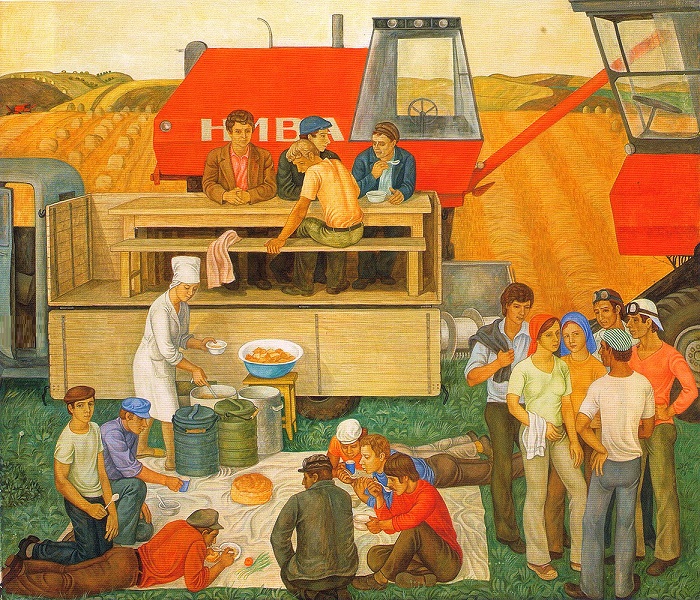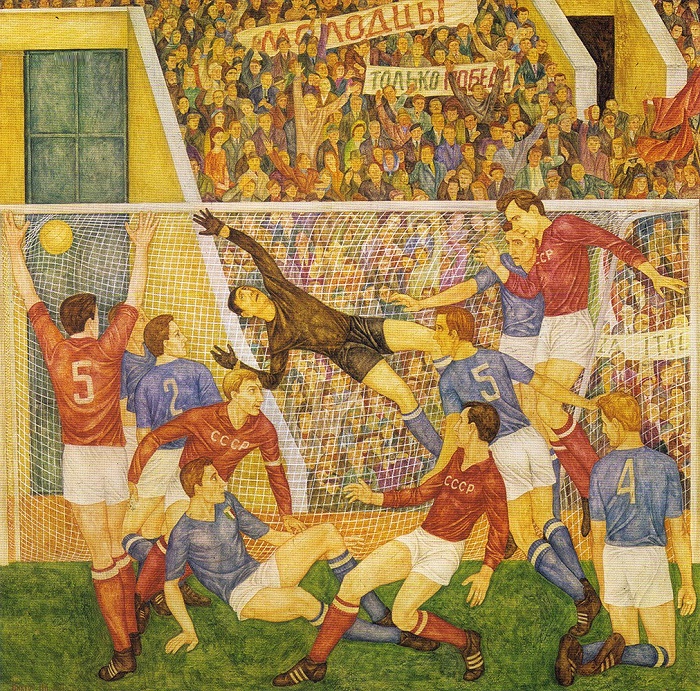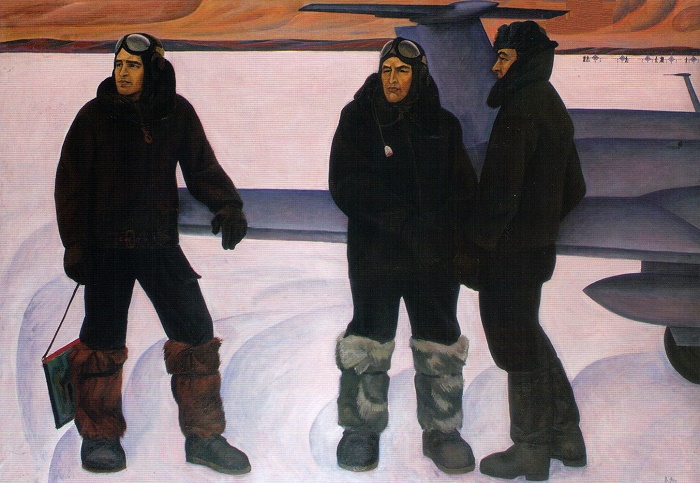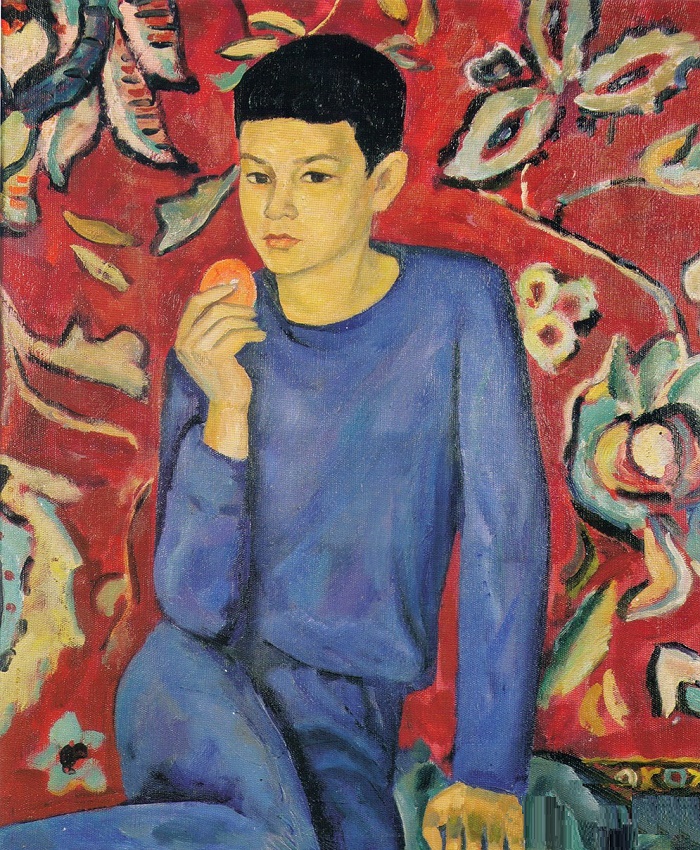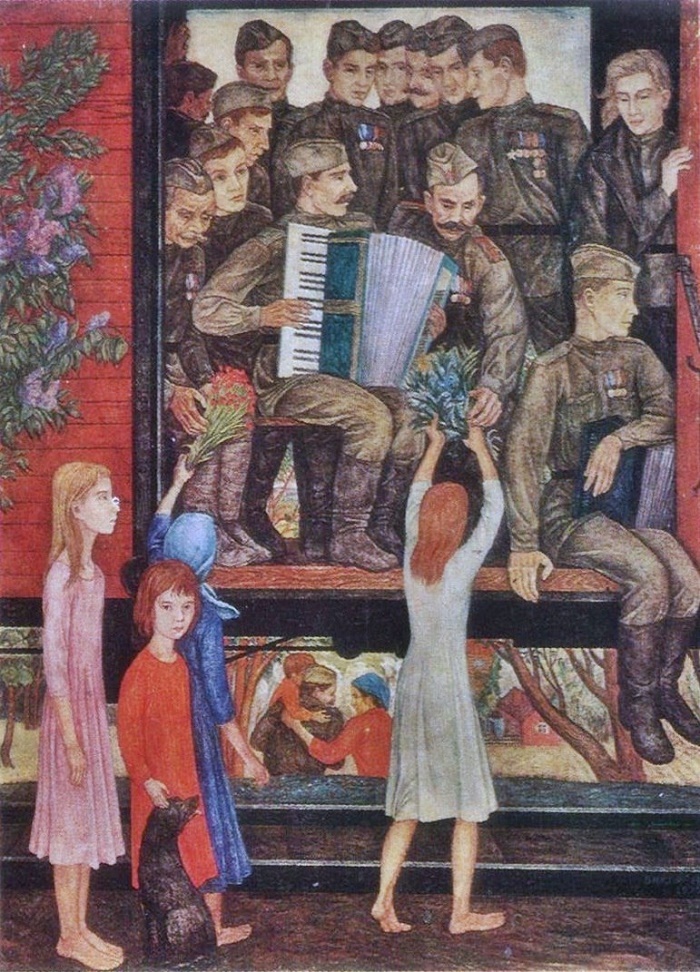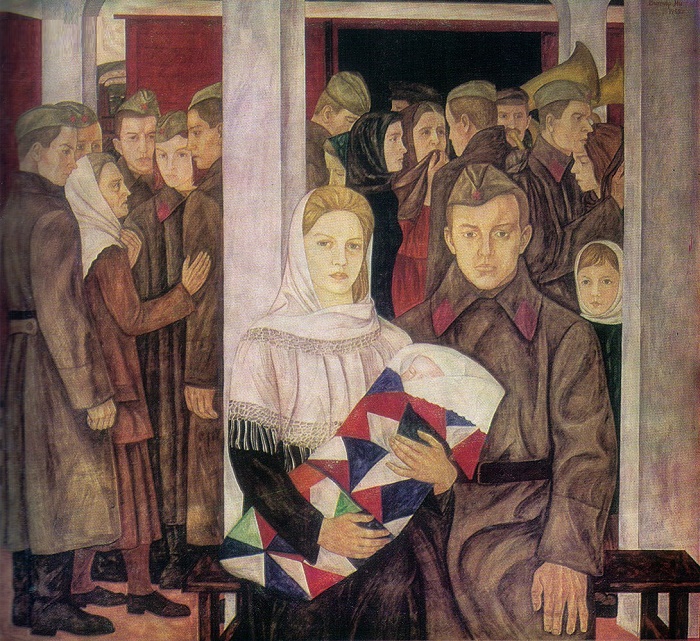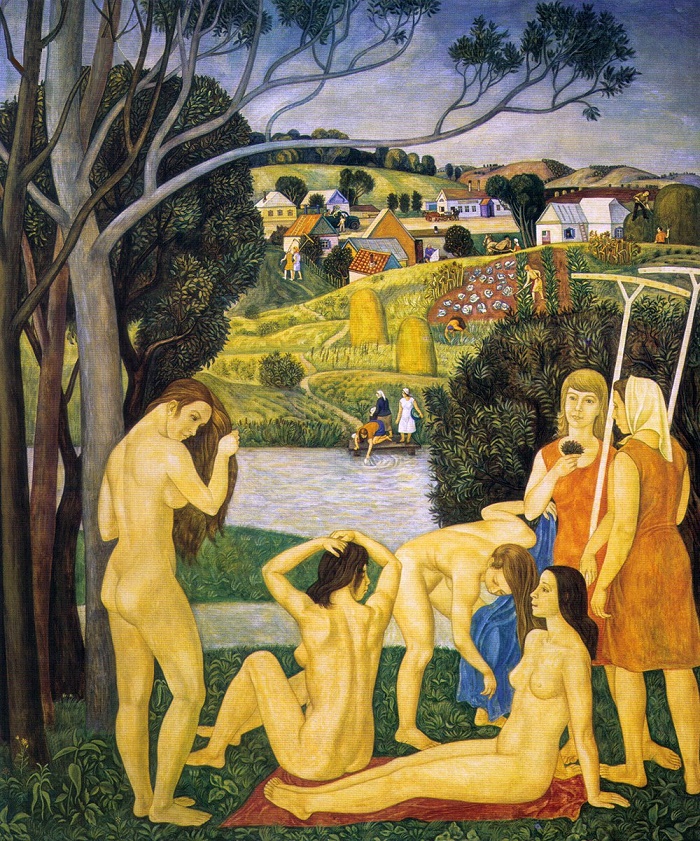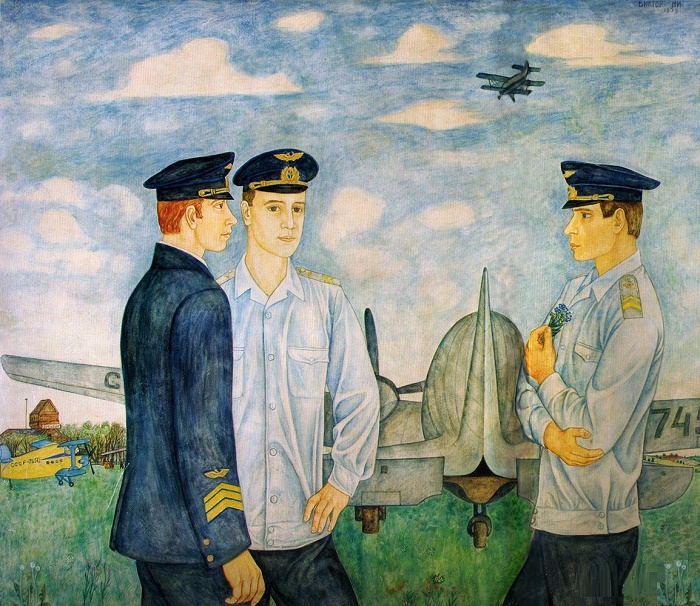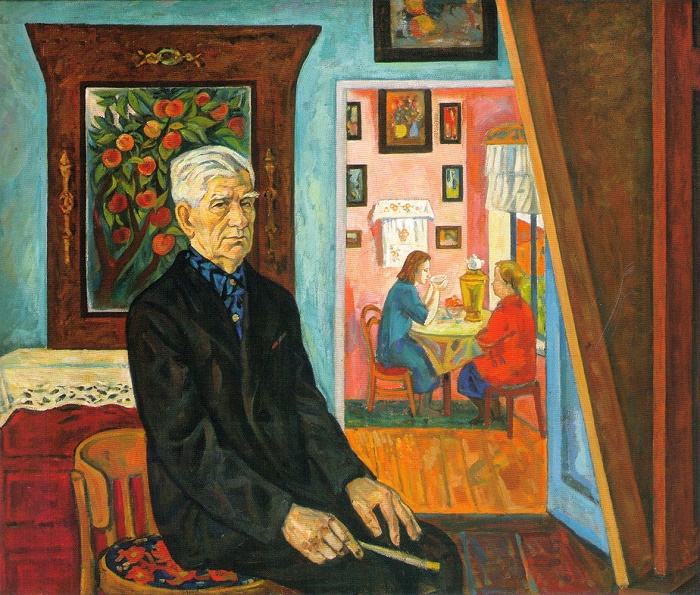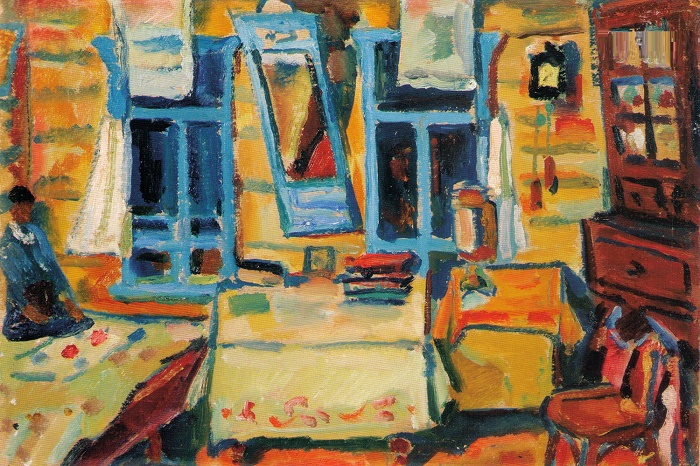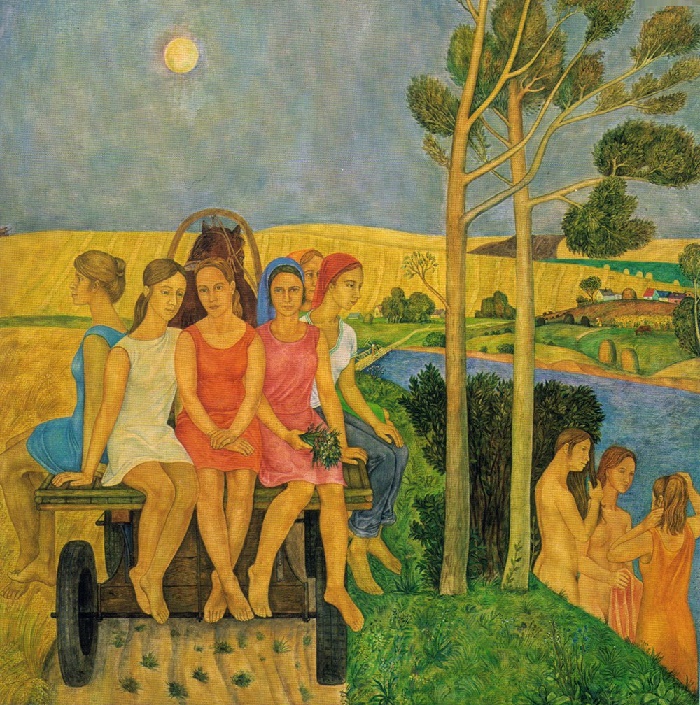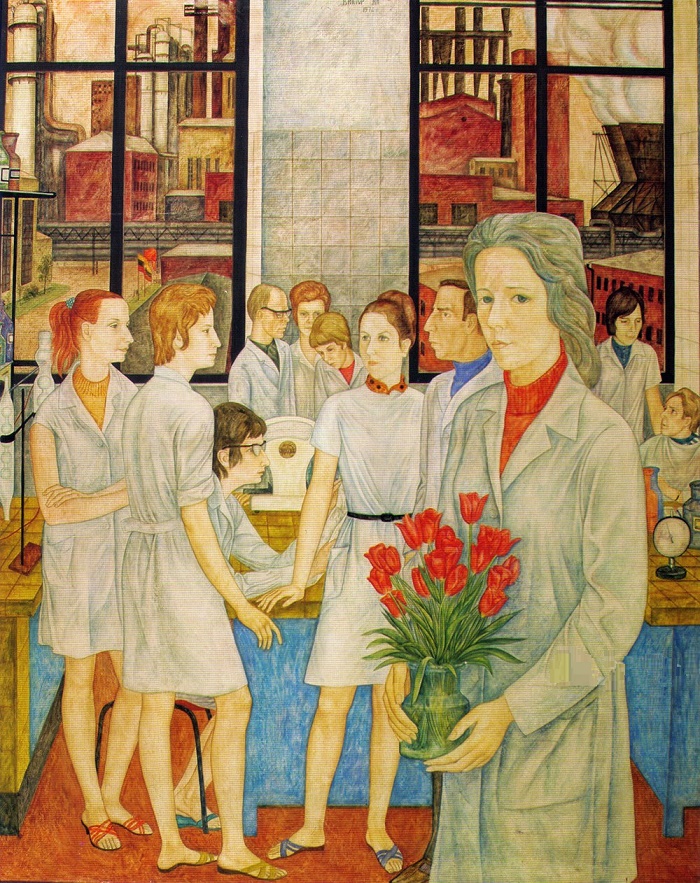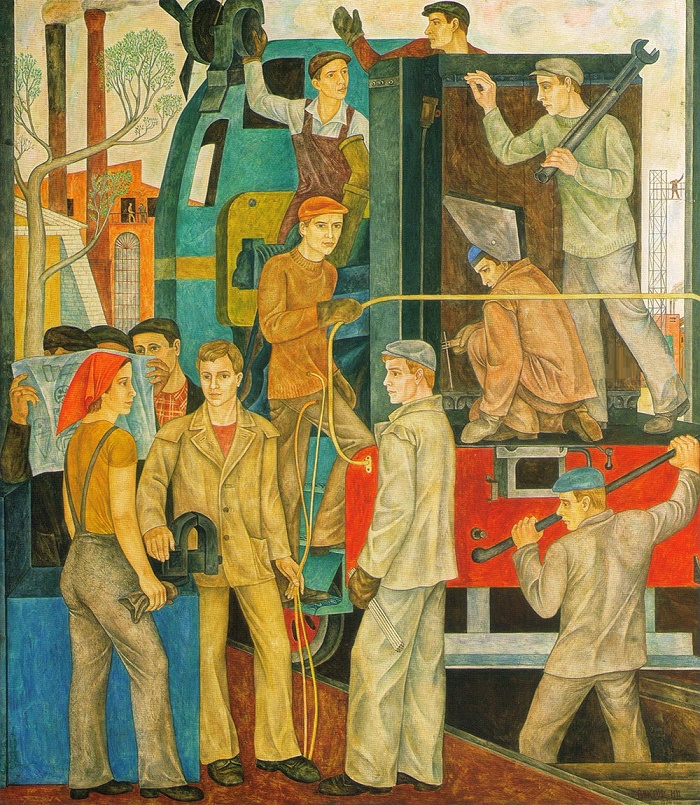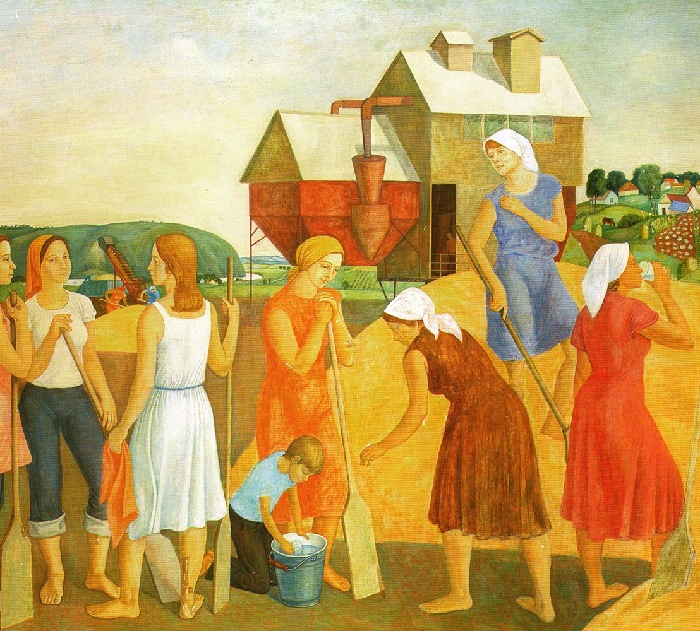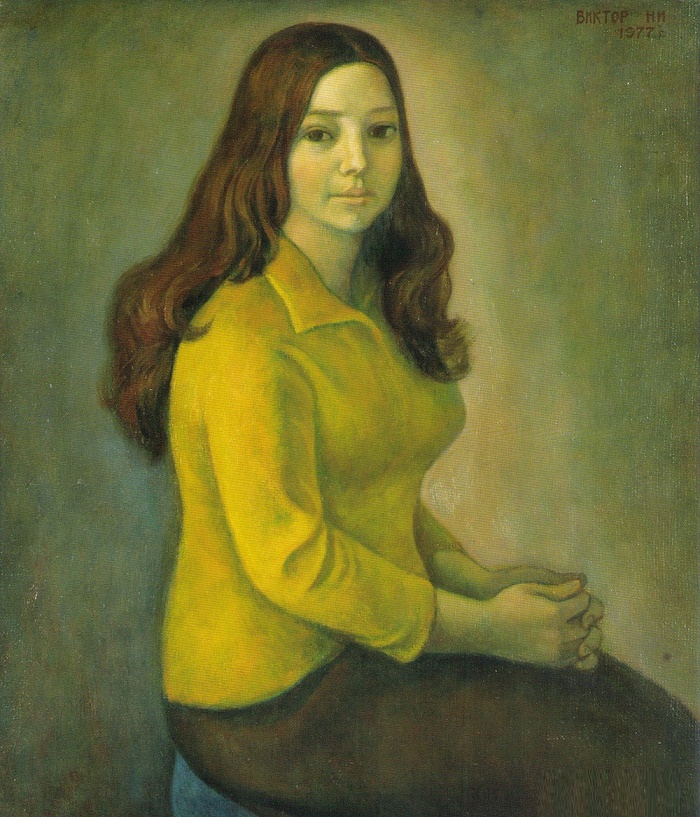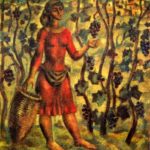Soviet Russian artist Viktor Trofimovich Ni 1934-1979
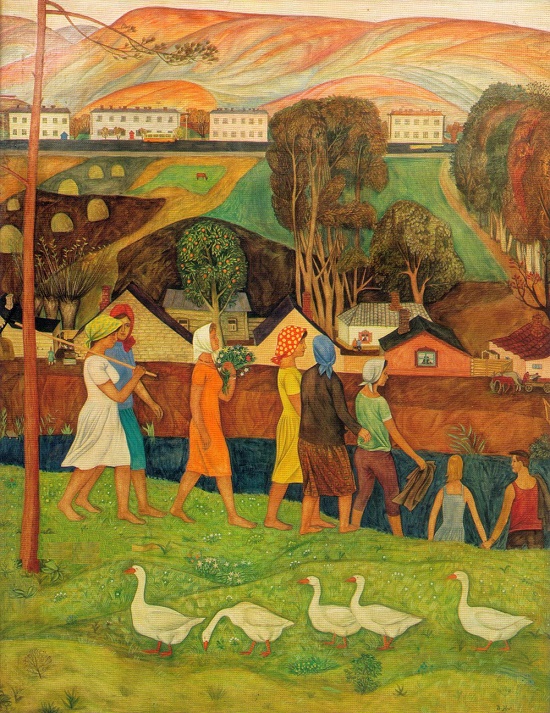
Returning from the field. 1968. Hardboard, gesso. Perm Art Gallery. Painting by Soviet Russian artist Viktor Trofimovich Ni (December 10, 1934, Vladivostok – December 6, 1979, Tyumen)
Soviet Russian artist Viktor Trofimovich Ni
Born in Vladivostok, far east of the USSR, Viktor Trofimovich Ni was Korean by birth. He graduated from the Penza Art College of K.A. Savitsky (1953-1958). Then, studied in the studio of the famous Soviet artist Dmitry Zhilinsky at the Moscow State Art Institute of Surikov (1958-1964). After graduation, in 1964 he moved to Orenburg and taught at the art department of the Orenburg Musical College (1975-1979).
Member of the Union of Artists of the RSFSR (1969), Viktor Ni was a regular participant of republican and foreign exhibitions of Soviet Art. He loved and studied the art of old masters (Leonardo, Vermeer, Cranach, Rublev, Dionysius), and the Italian Early Renaissance. Among Soviet artists, he appreciated Arkady Plastov and Pavel Korin, and from the art of the East – Japanese engraving.
Meanwhile, his main works include 15 canvases. Among them – “Seeing Off” 1969, “Return from the Field” 1969, “Crew of the Local Line” 1973, “Summer” 1978, and “Combiners” 1979. In addition, he repeatedly addressed to the theme of the Great Patriotic War (“Seeing off”, “1941” 1969, Liberation 1973, “Return, 1945” 1970, The soldier returned from the war, 1979). In the paintings devoted to the war, Ni never portrayed fights and deaths, but sought a poetic, song, and emotional plot.
Traditionally, an important motive of the artist’s work was the inner connection between man and nature. And the earth in his paintings is as individual as people. While figures always stand firmly on the ground. Also, his female portraits are variations of themes of purity, femininity, emotional sensitivity and dreaminess, “soaring” over the everyday realities. Besides, in the landscape genre, he created many sketches resembling postimpressionism.
According to contemporaries, Ni “first rebelled against the severe style.” In fact, he was one of the first Soviet easel painters to departure from the severe style in the moan of a professional (neo) primitive. Thus, he worked in the ancient technique of levkas, suggesting clarity, elevation of images, combined with the subtlety of psychological characteristics. The painter considered the picture not only spiritual, but also material. In addition, to work on gesso, according to the artist himself, you need a steady hand, as it is difficult to correct mistakes, and impossible to afford to relax.
Sadly, a talented artist died of heart failure, before he reached the rank of Honored Artist of the RSFSR. Contemporaries say: “It’s amazing: a Korean by birth, he seemed to the bone of a Russian man!”
The works of Viktor Trofimovich Ni are in the State Tretyakov Gallery, the State Russian Museum, the museums of the city of Orenburg, Perm, private collections in Russia and abroad.
Soviet Russian artist Viktor Trofimovich Ni
Source
Illustrated album “Victor Ni” (L.S. Medvedev), the publishing house “Orenburg Book”, 2008


